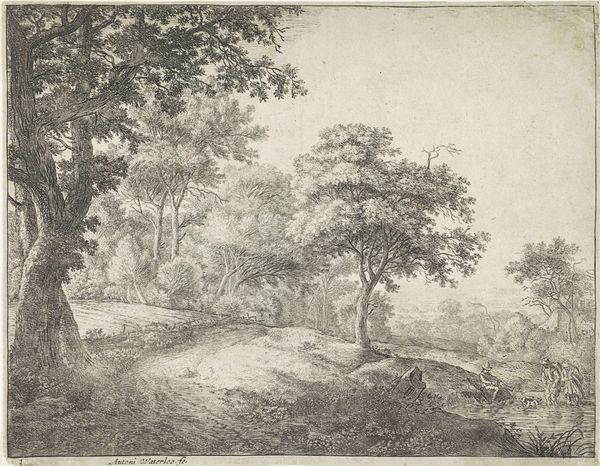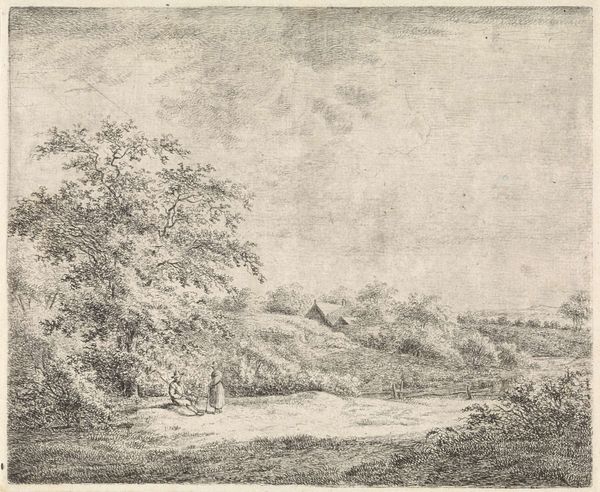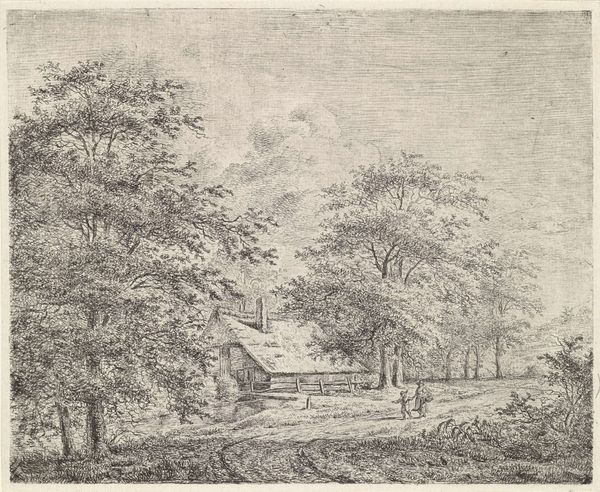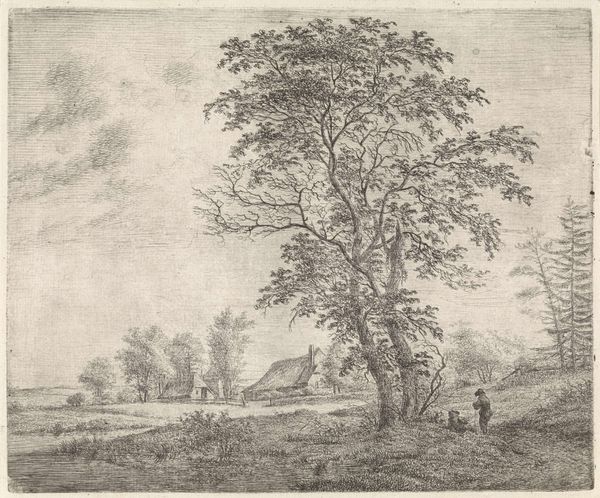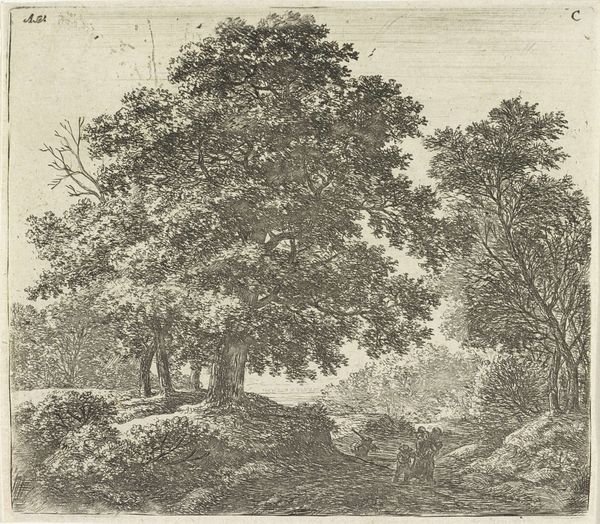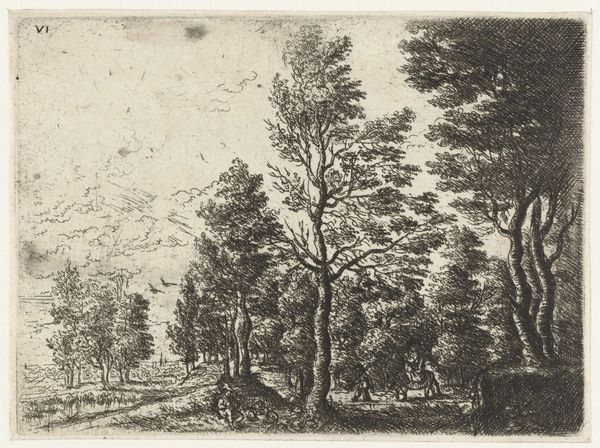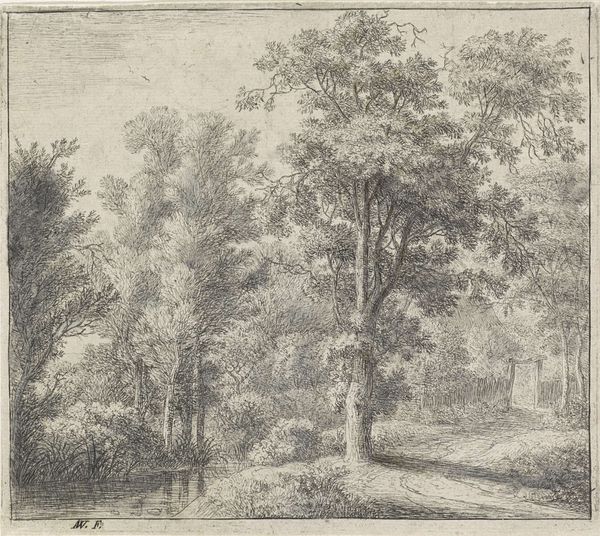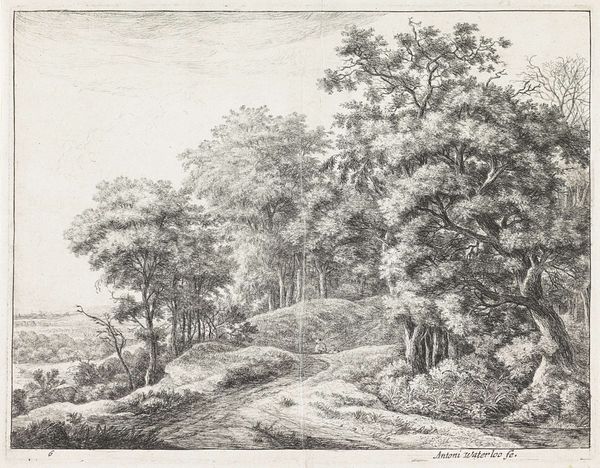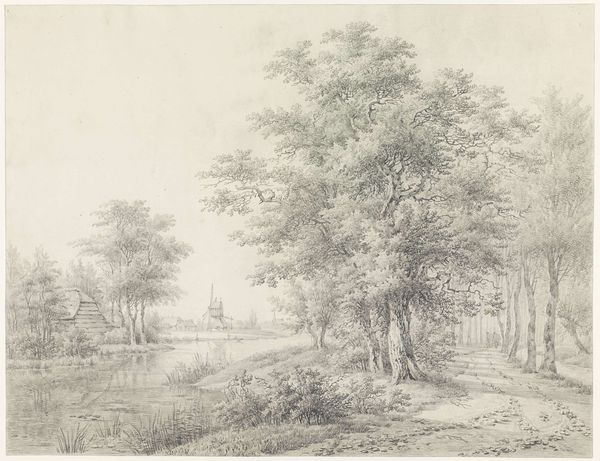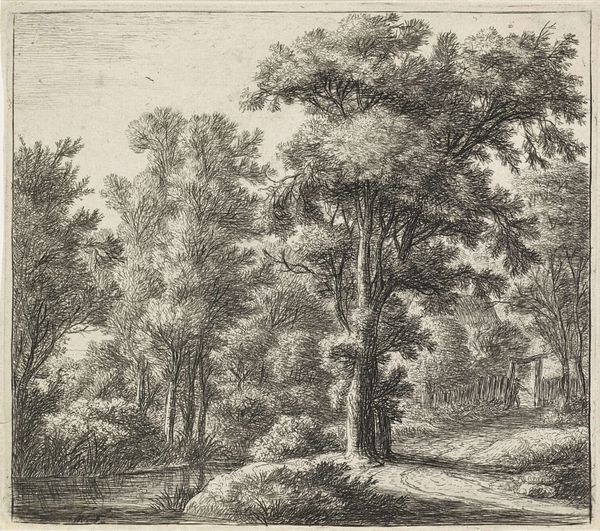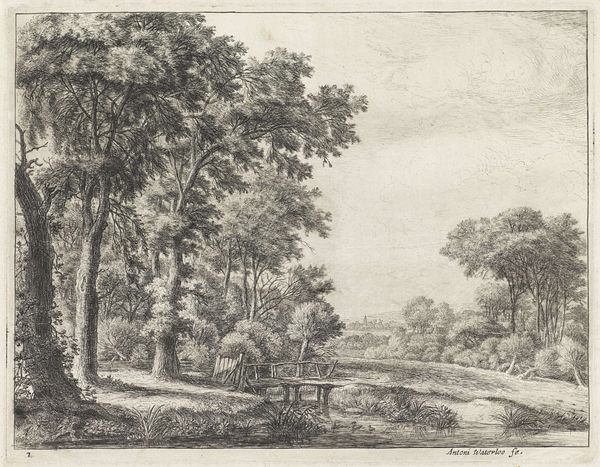
drawing, print, etching, paper
#
drawing
# print
#
etching
#
landscape
#
paper
#
romanticism
Dimensions: height 159 mm, width 195 mm
Copyright: Rijks Museum: Open Domain
Curator: Here we have Pieter Janson's "Wooded Landscape with a Winding Road," created sometime between 1780 and 1851. It's an etching on paper, showcasing his skill as a printmaker. Editor: It's a fairly small piece, I imagine, given it's an etching, but it evokes this wide-open, peaceful feeling. It almost feels a little melancholic in its stillness, even though it depicts nature teeming with growth. Curator: Well, landscape art in that era really catered to bourgeois ideals. Think about the growing middle class wanting to display images of their nation, or of the peace they perceived around them, demonstrating property and cultivated taste. This piece, as a print, made that attainable for many. Editor: Right, accessible art for a growing market. I'm struck by the labor involved here; all those tiny, careful lines etched into the plate, repeatedly pressed to create multiple images on paper. There's a real contrast with the apparent spontaneity of the natural scene itself. Did Janson print them himself? Curator: That’s a very good question, and probably not. Specialization of labor in the art world grew steadily through that period. An artist created, yes, but printers handled that skilled, physical labor of transferring the image. What does that division mean, who gets recognized, and how are they compensated? That's important to understand. Editor: Absolutely. Looking closer, you can almost smell the ink. And see how the road leads our eye into the landscape? Is it supposed to evoke our connection to land and work? Maybe it asks the question what type of work leads towards idyllic life? Curator: It’s undoubtedly a nod towards Romantic ideals, focusing on the grandeur and sublimity of nature while integrating this path for the pedestrian to participate in. Think of it as a way to connect to concepts of the “national” by suggesting pathways of property and industry through that national terrain. Editor: It’s interesting to think about this piece being reproducible. Each print being near-identical yet, subtly different because of the hand-printing element—that’s so of-its-time, and so evocative of the changing nature of art in the late 18th and early 19th century. Curator: It really encapsulates the shifting dynamic between artist, object, and audience during a period of significant social transformation. Editor: Agreed, a really interesting look into how the means of production inform how we receive landscape and the notion of "country."
Comments
No comments
Be the first to comment and join the conversation on the ultimate creative platform.
